LT → Collections → Songs with One-Word Titles from A to Z
Created by mk87 on 09 Feb 2018
Some of my favourite songs in English language from A to Z.
- Subscribe
The title track of Carly Simon’s 1971 album «Anticipation» tells about the good you can find in uncertainty. «Anticipation, anticipation is making me late, is keeping me waiting» – what a clever line!
Long before Gwen Stefani decided she was no «Hollaback Girl», No Doubt were among the heroes of my teenage years. Bathwater, which first appeared on the 2000 album «Return from Saturn», has some of the most cringeworthy lyrics, which made me wonder if I would ever be able to love someone enough to «share a toothbrush».
I fell in love with the music of Tracy Chapman when I stumbled over a copy of the 1989 album «Crossroads» at a reduced price at some point during the early 2000s. I knew right away that she believes in every word she’s singing.
This song appeared on «Rumours» (1977), THE Fleetwood Mac album. I love this song because it bares a very distinctive and yet indescribable emotion that I never really managed to capture. It’s not happy, it’s not sad. It touches me, but I can’t really explain why.
It’s a hauntingly beautiful, piano-driven ballad that is just obscure enough to be still considered «artsy». The song was the second official single off the album «Far» in 2009.
Alicia Keys is one of the few singers whose songs I don’t find too interesting apart from the ones that were released as singles. «Fallin'» has that pure emotion that I love, which proves that Alicia Keys is at her best when she’s creating a song all by herself and without the help of four or five co-writers.
Love her or hate her, but Madonna is actually a great performance artist who brings to life both up-tempo songs and ballads. This is one of her more «conservative» songs on «Music» (2000). It’s a very simple composition, but it’s been stuck in my head ever since I heard it for the first time.
«Post» (1995) is probably the most «approachable» album in Björk’s catalogue. The stand-out track for me is «Hyperballad», a very intense track that made me feel like music was suddenly in 3D when I heard it for the first time.
Queen had many songs with that «epic» kind of feeling, but the title track of «Innuendo» (1991) is easily my favourite among them. «Through the sorrow all through our splendour don’t take offence at my innuendo» — well said.
While I’m not quite a «Jazzman» myself, there are some Jazz-influenced songs that I really like. Carole King’s pop song, which appeared on her 1974 album «Wrap Around Joy», embodies all the passion you can in whom I consider one of the greatest songwriters ever.
Song language: English
«The Kick Inside» (1978) is an eccentric album in the best way imaginable. «Kite» was actually the B-side to Kate Bush’s signature song «Wuthering Heights» but is actually even more brillant in terms of composition and arrangement.
Song language: English
«Luka», the lead single off «Solitude Standing» (1987) was Suzanne Vega’s biggest hit for a reason. It’s amazing how she manages to put troubling lyrics over a catchy pop tune without creating something disturbing.
I don’t know what it is that makes me love musicals. My brain tells me that they’re cheesy and have weird storylines and yet my heart can’t resist. «Memory» is probably my favourite Webber ballad and nobody sings it better than Elaine Page.
This ballad appeared on «Automatic for the People» (1992) and is one of those great R.E.M. ballads that find their strengths in minimalism. It’s undeniably cheesy, but in one of the most heartfelt ways imaginable.
This song appeared on Amanda Palmer’s debut album «Who Killed Amanda Palmer» in 2008. While it’s the genuine emotion that I love in many of the songs on this list, it’s Amanda Palmer’s dark sarcasm which I admire here.
Song language: English
«Bury the Hatchet» was released in 1999 but I could still listen to it on repeat every single day of my life. «Promises» is the kind of song you want to listen to after you’ve been deceived by someone because it helps you find empowerment in your anger.
For some reason, many of the songs on this list appeared on the artist’s debut album. «Queer» was the third single off «Garbage» in 1995. It took me some time to get into it (because it’s so different — how ironic!) but now it’s actually my favourite track on the album.
One of the songs from «Yes I Am» (1993), Melissa Etheridge’s most successful album. It is full of passion and showcases Melissa’s incredible talent of conveying the good and the bad that love can give us.
Song language: English
This song appeared on Alanis Morissette’s 2002 album «Under Rug Swept». Despite being an rather unknown track, I think it’s one of the most clever and thrilling compositions of her entire career.
I listened to this song so many times (mostly in my car) when it was released as the first single off Van Halen’s comeback album «A Different Kind of Truth» in 2012 that it’s now the most played track on my iTunes with a one-track title starting with a «T». I honestly didn’t see that coming.
Song language: English
«Uncharted» was included on «Kaleidoscope Heart» (2010), Sara Bareille’s second album (which was ironically her only album that charted at number 1) and proves one more time that there is no reason why poetry and pop music should be mutually exclusive.
I waited 13 years for Fiona Apple to release another album. «The Idler Wheel…» finally arrived in 2012 and included this tearful piano ballad: «You didn’t see my valentine, I sent it via pantomime while you were watchin’ someone else I stared at you and cut myself».
This was actually Annie Lennox’s debut single (taken from «Diva», 1992). Being one of the best vocalists on planet Earth, the singer delivers such an emotional performance in the studio version and various live versions that I consider this one of the key «heartbreak» songs in my life.
There are so many great Blondie songs to choose from, so I was glad they had one starting with «X». This one appeared on the band’s eponymous debut album in 1976 and set the pace for everything that was yet to come.
This song from «Become You» (2002) is most likely one of Amy Ray’s most light-hearted compositions, but it’s actually that simplicity that makes this song so great. Who cares what your friends and family think? It’s our love that matters. So true.
Song language: English
This song was featured on the soundtrack of «Bulworth» (1998). I’m by no means an expert in hip hop music but this one has pretty clever lyrics in the context of the film.
Song language: English
Songs with the title only one word, short title, simple but always good.
Over 100 songs here so is a long list.
Be patience.
1,892 users
·
53,660 views
avg. score: 35 of 208 (17%)
required scores: 1, 2, 3, 26, 82
How many have you heard?
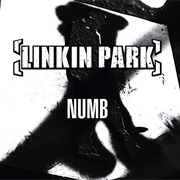
Numb — Linkin Park
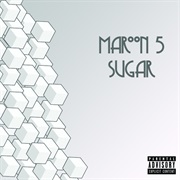
Sugar — Maroon 5
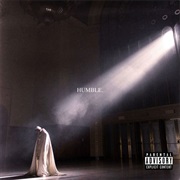
Humble — Kendrick Lamar
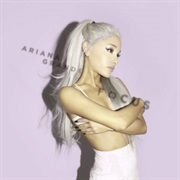
Focus — Ariana Grande
ADVERTISEMENT
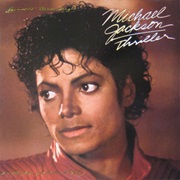
Thriller — Michael Jackson
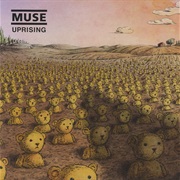
Uprising — Muse
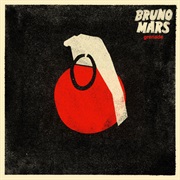
Grenade — Bruno Mars
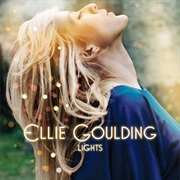
Lights — Ellie Goulding
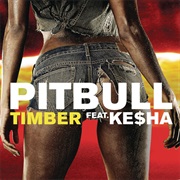
Timber — Pitbull Feat. Ke$Ha
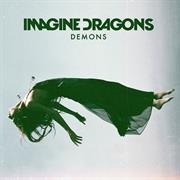
Demons — Imagine Dragons
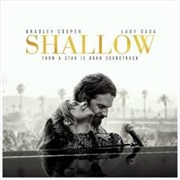
Shallow — Lady Gaga & Bradley Cooper
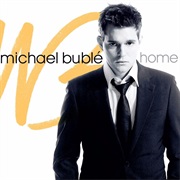
Home — Michael Bublé
ADVERTISEMENT
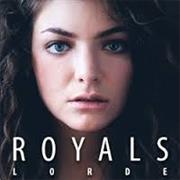
Royals- Lorde
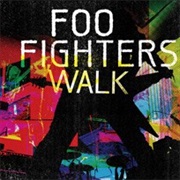
Walk — Foo Fighters
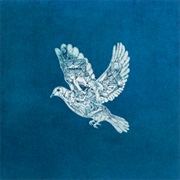
Magic — Coldplay
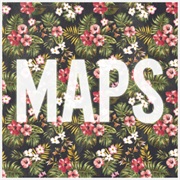
Maps — Maroon 5
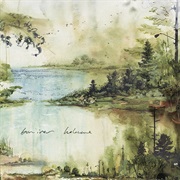
Holocene — Bon Iver
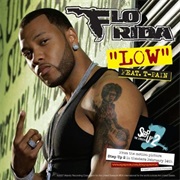
Low — Flo Rida Feat. T-Pain
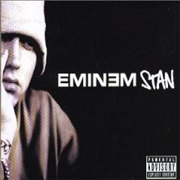
Stan — Eminem Feat. Dido
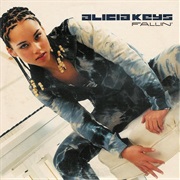
Fallin’ — Alicia Keys
ADVERTISEMENT
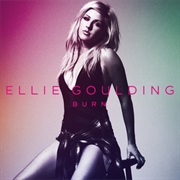
Burn — Ellie Goulding

Roar — Katy Perry
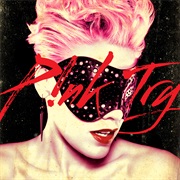
Try — Pink
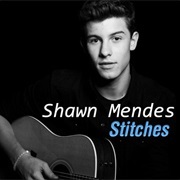
Stitches — Shawn Mendes
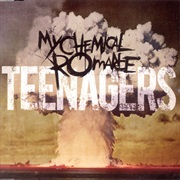
Teenagers — My Chemical Romance
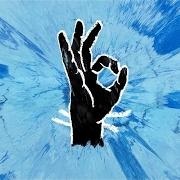
Perfect — Ed Sheeran

Photograph — Ed Sheeran
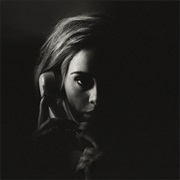
Hello — Adele
ADVERTISEMENT
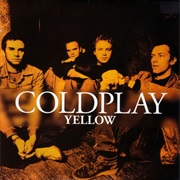
Yellow — Coldplay
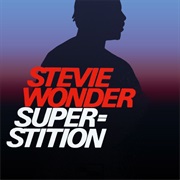
Superstition — Stevie Wonder
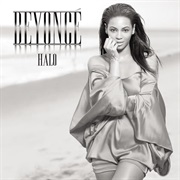
Halo — Beyonce
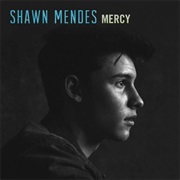
Mercy — Shawn Mendes

Domino — Jessie J
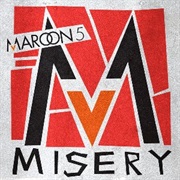
Misery — Maroon 5
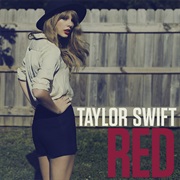
Red — Taylor Swift
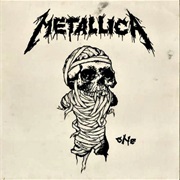
One — Metallica
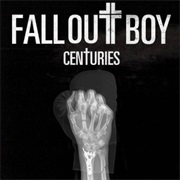
Centuries — Fall Out Boy
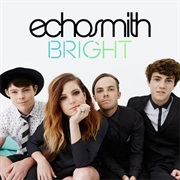
Bright — Echosmith
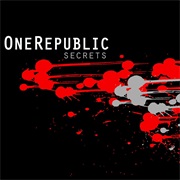
Secrets — Onerepublic

Mirrors- Justin Timberlake
Newsletter ·
Help/Contact ·
Privacy ·
Copyright Claim
© 2023 App Spring, Inc.
·
This product uses the TMDb API but is not endorsed or certified by TMDb.
|
|
Seen It — Movies & TV Android & iOS |
Seen It is a new app from the creators of List Challenges. You can view movies and shows in one place and filter by streaming provider, genre, release year, runtime, and rating (Rotten Tomatoes, Imdb, and/or Metacritic). Also, you can track what you’ve seen, want to see, like, or dislike, as well as track individual seasons or episodes of shows. In addition, you can see the most watched/liked stuff amongst your friends. Learn more at SEENIT.FUN
“Roar.” “Royals.” “Radioactive.” Notice a common thread among these recent hits? The number of charting songs with one-word titles continues to grow, with single-monikered tracks now making up nearly a third of the Billboard Hot 100 each week. To explore this trend, we’ve delved into the Hot 100 archives to formulate this chart of the top 50 biggest one-word hits.
Why Hit Songs Now Have One-Word Titles
The ranking is based on actual performance on the weekly Billboard Hot 100 chart. Songs are ranked based on an inverse point system, with weeks at No. 1 earning the greatest value and weeks at No. 100 earning the least. To ensure equitable representation of the biggest hits from each era, certain time frames were weighted to account for the difference between turnover rates from those years.
-
«Ghostbusters» — Ray Parker Jr. Hot 100 Peak: 1, Peak Date: 8/11/1984
-
«Believe» — Cher Hot 100 Peak: 1, Peak Date: 3/13/1999
-
«Magic» — Olivia Newton-John Hot 100 Peak: 1, Peak Date: 8/2/1980
-
«Funkytown» — Lipps, Inc. Hot 100 Peak: 1, Peak Date: 5/31/1980
-
«Twisted» — Keith Sweat Hot 100 Peak: 2, Peak Date: 8/17/1996
-
«Runaway» — Del Shannon Hot 100 Peak: 1, Peak Date: 4/29/1961
-
«Dreamlover» — Mariah Carey Hot 100 Peak: 1, Peak Date: 9/11/1993
-
«OMG» — Usher feat. will.i.am Hot 100 Peak: 1, Peak Date: 5/15/2010
-
«Emotions» — Mariah Carey Hot 100 Peak: 1, Peak Date: 10/12/1991
-
«Still» — Commodores Hot 100 Peak: 1, Peak Date: 11/17/1979
NEXT: 40-31
-
«Poison» — Bell Biv Devoe Hot 100 Peak: 3, Peak Date: 6/9/1990
-
«Footloose» — Kenny Loggins Hot 100 Peak: 1, Peak Date: 3/31/1984
-
«Grenade» — Bruno Mars Hot 100 Peak: 1, Peak Date: 1/8/2011
-
«Promiscuous» — Nelly Furtado feat. Timbaland Hot 100 Peak: 1, Peak Date: 7/8/2006
-
«Reunited» — Peaches & Herb Hot 100 Peak: 1, Peak Date: 5/5/1979
-
«Escapade» — Janet Jackson Hot 100 Peak: 1, Peak Date: 3/3/1990
-
«Kryptonite» — 3 Doors Down Hot 100 Peak: 3, Peak Date:11/11/2000
-
«Unbelievable» — EMF Hot 100 Peak: 1, Peak Date: 7/20/1991
-
«Fantasy» — Mariah Carey Hot 100 Peak: 1, Peak Date: 9/30/1995
-
«Alone» — Heart Hot 100 Peak: 1, Peak Date: 7/11/1987
NEXT: 30-21
-
«Dynamite» — Taio Cruz Hot 100 Peak: 2, Peak Date: 8/21/2010
-
«Honey» — Bobby Goldsboro Hot 100 Peak: 1, Peak Date: 4/13/1968
-
«Jump» — Van Halen Hot 100 Peak: 1, Peak Date: 2/25/1984
-
«Lollipop» — Lil Wayne feat. Static Major Hot 100 Peak: 1, Peak Date: 5/3/2008
-
«Firework» — Katy Perry Hot 100 Peak: 1, Peak Date: 12/18/2010
-
«Vogue» — Madonna Hot 100 Peak: 1, Peak Date: 5/19/1990
-
«Waterfalls» — TLC Hot 100 Peak: 1, Peak Date: 7/8/1995
-
«Goodies» — Ciara feat. Petey Pablo Hot 100 Peak: 1, Peak Date: 9/11/2004
-
«Creep» — TLC Hot 100 Peak: 1, Peak Date: 1/28/1995
-
«Fallin'» — Alicia Keys Hot 100 Peak: 1, Peak Date: 8/18/2001
NEXT: 20-11
-
«Radioactive» — Imagine Dragons Hot 100 Peak: 3, Peak Date: 7/6/2013
-
«Irreplaceable» — Beyoncé Hot 100 Peak: 1, Peak Date: 12/16/2006
-
«Breathe» — Faith Hill Hot 100 Peak: 2, Peak Date: 4/22/2000
-
«Venus» — Frankie Avalon Hot 100 Peak: 1, Peak Date: 3/14/1959
-
«Faith» — George Michael Hot 100 Peak: 1, Peak Date: 12/12/1987
-
«Burn» — Usher Hot 100 Peak: 1, Peak Date: 5/22/2004
-
«Maneater» — Daryl Hall & John Hot 100 Peak: 1, Peak Date: 12/18/1982
-
«Foolish» — Ashanti Hot 100 Peak: 1, Peak Date: 4/20/2002
-
«Down» — Jay Sean feat. Lil Wayne Hot 100 Peak: 1, Peak Date: 10/17/2009
-
«Abracadabra» — The Steve Miller Band Hot 100 Peak: 1, Peak Date: 9/4/1982
NEXT: 10-1
-
«Dilemma» — Nelly feat. Kelly Rowland Hot 100 Peak: 1, Peak Date: 8/17/2002
-
«Royals» — Lorde Hot 100 Peak: 1, Peak Date: 10/12/2013
-
«Centerfold» — The J. Geils Band Hot 100 Peak: 1, Peak Date: 2/6/1982
-
«Apologize» — Timbaland feat. OneRepublic Hot 100 Peak: 2, Peak Date: 11/10/2007
-
«Lady» — Kenny Rogers Hot 100 Peak: 1, Peak Date: 11/15/1980
-
«Low» — Flo Ride feat. T-Pain Hot 100 Peak: 1, Peak Date: 1/5/2008
-
«Yeah!» — Usher feat. Lil Jon & Ludacris Hot 100 Peak: 1, Peak Date: 2/28/2004
-
«Physical» — Olivia Newton-John Hot 100 Peak: 1, Peak Date: 11/21/1981
-
«Macarena» — Los Del Rio Hot 100 Peak: 1, Peak Date: 8/3/1996
-
«Smooth» — Santana feat. Rob Thomas Hot 100 Peak: 1, Peak Date: 10/23/1999
-
«Ghostbusters» — Ray Parker Jr. Hot 100 Peak: 1, Peak Date: 8/11/1984
-
«Believe» — Cher Hot 100 Peak: 1, Peak Date: 3/13/1999
-
«Magic» — Olivia Newton-John Hot 100 Peak: 1, Peak Date: 8/2/1980
-
«Funkytown» — Lipps, Inc. Hot 100 Peak: 1, Peak Date: 5/31/1980
-
«Twisted» — Keith Sweat Hot 100 Peak: 2, Peak Date: 8/17/1996
-
«Runaway» — Del Shannon Hot 100 Peak: 1, Peak Date: 4/29/1961
-
«Dreamlover» — Mariah Carey Hot 100 Peak: 1, Peak Date: 9/11/1993
-
«OMG» — Usher feat. will.i.am Hot 100 Peak: 1, Peak Date: 5/15/2010
-
«Emotions» — Mariah Carey Hot 100 Peak: 1, Peak Date: 10/12/1991
-
«Still» — Commodores Hot 100 Peak: 1, Peak Date: 11/17/1979
NEXT: 40-31
-
«Poison» — Bell Biv Devoe Hot 100 Peak: 3, Peak Date: 6/9/1990
-
«Footloose» — Kenny Loggins Hot 100 Peak: 1, Peak Date: 3/31/1984
-
«Grenade» — Bruno Mars Hot 100 Peak: 1, Peak Date: 1/8/2011
-
«Promiscuous» — Nelly Furtado feat. Timbaland Hot 100 Peak: 1, Peak Date: 7/8/2006
-
«Reunited» — Peaches & Herb Hot 100 Peak: 1, Peak Date: 5/5/1979
-
«Escapade» — Janet Jackson Hot 100 Peak: 1, Peak Date: 3/3/1990
-
«Kryptonite» — 3 Doors Down Hot 100 Peak: 3, Peak Date:11/11/2000
-
«Unbelievable» — EMF Hot 100 Peak: 1, Peak Date: 7/20/1991
-
«Fantasy» — Mariah Carey Hot 100 Peak: 1, Peak Date: 9/30/1995
-
«Alone» — Heart Hot 100 Peak: 1, Peak Date: 7/11/1987
NEXT: 30-21
-
«Dynamite» — Taio Cruz Hot 100 Peak: 2, Peak Date: 8/21/2010
-
«Honey» — Bobby Goldsboro Hot 100 Peak: 1, Peak Date: 4/13/1968
-
«Jump» — Van Halen Hot 100 Peak: 1, Peak Date: 2/25/1984
-
«Lollipop» — Lil Wayne feat. Static Major Hot 100 Peak: 1, Peak Date: 5/3/2008
-
«Firework» — Katy Perry Hot 100 Peak: 1, Peak Date: 12/18/2010
-
«Vogue» — Madonna Hot 100 Peak: 1, Peak Date: 5/19/1990
-
«Waterfalls» — TLC Hot 100 Peak: 1, Peak Date: 7/8/1995
-
«Goodies» — Ciara feat. Petey Pablo Hot 100 Peak: 1, Peak Date: 9/11/2004
-
«Creep» — TLC Hot 100 Peak: 1, Peak Date: 1/28/1995
-
«Fallin'» — Alicia Keys Hot 100 Peak: 1, Peak Date: 8/18/2001
NEXT: 20-11
-
«Radioactive» — Imagine Dragons Hot 100 Peak: 3, Peak Date: 7/6/2013
-
«Irreplaceable» — Beyoncé Hot 100 Peak: 1, Peak Date: 12/16/2006
-
«Breathe» — Faith Hill Hot 100 Peak: 2, Peak Date: 4/22/2000
-
«Venus» — Frankie Avalon Hot 100 Peak: 1, Peak Date: 3/14/1959
-
«Faith» — George Michael Hot 100 Peak: 1, Peak Date: 12/12/1987
-
«Burn» — Usher Hot 100 Peak: 1, Peak Date: 5/22/2004
-
«Maneater» — Daryl Hall & John Hot 100 Peak: 1, Peak Date: 12/18/1982
-
«Foolish» — Ashanti Hot 100 Peak: 1, Peak Date: 4/20/2002
-
«Down» — Jay Sean feat. Lil Wayne Hot 100 Peak: 1, Peak Date: 10/17/2009
-
«Abracadabra» — The Steve Miller Band Hot 100 Peak: 1, Peak Date: 9/4/1982
NEXT: 10-1
-
«Dilemma» — Nelly feat. Kelly Rowland Hot 100 Peak: 1, Peak Date: 8/17/2002
-
«Royals» — Lorde Hot 100 Peak: 1, Peak Date: 10/12/2013
-
«Centerfold» — The J. Geils Band Hot 100 Peak: 1, Peak Date: 2/6/1982
-
«Apologize» — Timbaland feat. OneRepublic Hot 100 Peak: 2, Peak Date: 11/10/2007
-
«Lady» — Kenny Rogers Hot 100 Peak: 1, Peak Date: 11/15/1980
-
«Low» — Flo Ride feat. T-Pain Hot 100 Peak: 1, Peak Date: 1/5/2008
-
«Yeah!» — Usher feat. Lil Jon & Ludacris Hot 100 Peak: 1, Peak Date: 2/28/2004
-
«Physical» — Olivia Newton-John Hot 100 Peak: 1, Peak Date: 11/21/1981
-
«Macarena» — Los Del Rio Hot 100 Peak: 1, Peak Date: 8/3/1996
-
«Smooth» — Santana feat. Rob Thomas Hot 100 Peak: 1, Peak Date: 10/23/1999
Как заинтересовать малыша учить английский алфавит, цвета, песни, рифмы, стихотворения — да что угодно? — Конечно, в игровой форме. Дети прекрасно воспринимают информацию на слух в непринуждённой форме, а если это песня — стопроцентный залог успеха! Ритм побуждает к движению, расставляет правильные ударения. В песенном жанре гораздо увлекательнее знакомиться с новыми словами, темами, правилами дорожного движения, этикета, поведения, целыми блоками английских слов. А на сегодняшний день мы обладаем ещё большим набором образовательных инструментов — красочные увлекательные видео с субтитрами, где зарифмованы необходимые для запоминания слова, они повторяются, и по этим причинам хорошо запоминаются.
№ 1. Alphabet song
Английский алфавит под музыку запоминается великолепно, включаем, подпеваем, пританцовываем, прихлопываем, вперёд:
A B C D E F G
H I J K
L M N O P
Q R S T U V
W X Y and Z.
The alphabet is so much fun
I love to sing with everyone.
Now I know my ABCs
Next time won’t you sing with me.
Переведём:
Эй Би Си Ди И Эф Джи
Эйч Ай Джей Кей
Эль Эм Эн Оу Пи
Кью Ар Эс Ти Ю Ви
Дабл ю Ви Уай энд Зэд
Алфавит — так много радости,
Я люблю со всеми петь.
Теперь я знаю Эй Би Си,
В следующий раз не спеть ли вместе.
И повторяем алфавит снова.
№ 2. Jingle bells
Jingle bells — хорошо известная мелодия звона рождественских колокольчиков, которая создаёт атмосферу приближающихся новогодних праздников. Эта весёлая новогодняя песенка помогает выучить некоторую лексику по теме «Зима». Итак, запрыгиваем в сани, подпеваем.
Dashing through the snow
In a one-horse open sleigh
O’er the fields we go
Laughing all the way.
Bells on bobtails ring
Making spirits bright
What fun it is to ride and sing
A sleighing song tonight.
Jingle bells, jingle bells
Jingle all the way,
Oh, what fun it is to ride
In a one-horse open sleigh, hey!
Jingle bells, jingle bells
Jingle all the way,
Oh, what fun it is to ride
In a one-horse open sleigh.
Переведём:
Мы мчимся в снегах
С лошадкою в санях,
Лошадки хвост звенит,
Дух праздничный бодрит.
Как песня веселит,
Повозка в ночь вперёд летит.
Дзынь-дзынь-дзынь,
Дзынь-дзынь-дзынь,
Звеним на всём пути,
Поездка на санях — веселье,
Вскачь, лошадь, лети, хэй!
Дзынь-дзынь-дзынь,
Дзынь-дзынь-дзынь,
Звеним на всём пути,
Поездка на санях — веселье,
Вскачь, лошадь, лети.
№ 3. Red Light, Green Light
Обучающая песня «Red Light, Green Light» («Красный свет, зелёный свет») — это не только знакомство с красным и зелёным цветами, это базовый свод правил дорожного движения для наших маленьких непосед. Очень важно, чтобы ребёнок учился следовать правилам с самого раннего детства и, конечно же, различать цвет опасности и запрета и цвет-сигнал к безопасному движению. Внимательно на дороге, поехали:
Red light, stop,
Green light, go.
Red light, stop,
Green light, go.
Red — stop, green — go.
Red light, green light,
Now you know.
Green light,
Red light —
Wait!
Green light,
Red light —
Wait!
Green light,
Red light.
Green light, red light.
Green light, red light.
Переведём:
Красный свет — стой,
Зелёный свет — иди.
Красный свет — стой,
Зелёный свет — иди.
Красный — стой, зелёный — иди.
Красный свет, зелёный свет теперь знаешь ты.
Зелёный свет
Красный свет — Жди
Зелёный свет
Красный свет — Жди
Зелёный свет, красный свет.
Повторяем первый куплет.
№ 4. Old MacDonald Had a Farm
«Old MacDonald Had a Farm» («Старик Мак Дональд ферму имел») — это песенка-скороговорка, которая тренирует дикцию, память, логическое мышление, помогает развить способность запоминать длинные логические цепочки и последовательность событий. Также целью песни является выучить лексику по теме «Farm Animals» — «Животные фермы» , понять, какие животные являются домашними и живут на ферме и, конечно, весьма забавно имитировать голоса животных и узнавать их.
Old MacDonald had a farm.
E-I-E-I-O
And on the farm he had a pig.
E-I-E-I-O
With an «oink oink» here
And an «oink oink» there
Here an «oink», there an «oink»
Everywhere a «oink oink».
Old MacDonald had a farm
E-I-E-I-O
Old MacDonald had a farm.
E-I-E-I-O
And on the farm he had a duck.
E-I-E-I-O
With a «quack quack» here
And a «quack quack» there
And an «oink oink» here
And an «oink oink» there.
Old MacDonald had a farm.
E-I-E-I-O
Old MacDonald had a farm.
E-I-E-I-O
And on the farm he had a horse.
E-I-E-I-O
With a «neigh neigh» here
And a «neigh neigh» there
And a «quack quack» here
And a «quack quack» there
And an «oink oink» here
And an «oink oink» there.
Old MacDonald had a farm.
E-I-E-I-O
Old MacDonald had a farm.
E-I-E-I-O
And on the farm he had a sheep.
E-I-E-I-O
With a «baa baa» here
And a «baa baa» there
And a «neigh neigh» here
And a «neigh neigh» there
And a «quack quack» here
And a «quack quack» there
And an «oink oink» here
And an «oink oink» there.
Old MacDonald had a farm.
E-I-E-I-O
Old MacDonald had a farm.
E-I-E-I-O
And on the farm he had a cow.
E-I-E-I-O
With a «moo moo» here
And a » moo moo» there
And a «baa baa» here
And a «baa baa» there
And a «neigh neigh» here
And a «neigh neigh» there
And a «quack quack » here
And a » quack quack» there
And an «oink oink» here
And an «oink oink» there.
Old MacDonald had a farm.
E-I-E-I-O
Old MacDonald had a farm.
E-I-E-I-O
And on the farm he had a turkey.
E-I-E-I-O
With a «gobble gobble» here
And a «gobble gobble» there
And a «moo moo» here
And a » moo moo» there
And a «baa baa» here
And a «baa baa» there
And a «neigh neigh» here
And a «neigh neigh» there
And a «quack quack» here
And a «quack quack» there
And an «oink oink» here
And an «oink oink» there.
Old MacDonald had a farm.
E-I-E-I-O
E-I-E-I-O
Перевод:
Старик Мак Дональд ферму имел.
И — Ай — И — Ай — Оу
Милая свинка там жила.
И — Ай — И — Ай — Оу
«Хрю-хрю» тут,
«Хрю-хрю» там,
«Хрю-хрю» тут и там.
Старик Мак Дональд ферму имел.
И — Ай — И — Ай — Оу
Старик Мак Дональд ферму имел.
И — Ай — И — Ай — Оу
Весёлая утка там жила.
И — Ай — И — Ай — Оу
«Кря-кря» тут,
«Кря-кря» там,
«Хрю-хрю» тут,
«Хрю-хрю» там.
Старик Мак Дональд ферму имел.
И — Ай — И — Ай — Оу
Старик Мак Дональд ферму имел.
И — Ай — И — Ай — Оу
А на ферме лошадь жила.
И — Ай — И — Ай — Оу
«Иго — го» тут,
«Иго — го» там,
«Кря-кря» тут,
«Кря-кря» там,
«Хрю-хрю» тут,
«Хрю-хрю» там.
Старик Мак Дональд ферму имел.
И — Ай — И — Ай — Оу
Старик Мак Дональд ферму имел.
И — Ай — И — Ай — Оу
А на той ферме овца жила.
И — Ай — И — Ай — Оу
«Бе-бе» тут,
«Бе-бе» там,
«Иго — го» тут,
«Иго — го» там,
«Кря-кря» тут,
«Кря-кря» там,
«Хрю-хрю» тут,
«Хрю-хрю» там.
Старик Мак Дональд ферму имел.
И — Ай — И — Ай — Оу
Старик Мак Дональд ферму имел.
И — Ай — И — Ай — Оу
А на ферме корова жила.
И — Ай — И — Ай — Оу
«Му-му» тут,
«Му-му» там,
«Бе-бе» тут,
«Бе-бе» там,
«Иго — го» тут,
«Иго — го» там,
«Кря-кря» тут,
«Кря-кря» там,
«Хрю-хрю» тут,
«Хрю-хрю» там.
Старик Мак Дональд ферму имел.
И — Ай — И — Ай — Оу
Старик Мак Дональд ферму имел.
И — Ай — И — Ай — Оу
И индюк на ферме жил.
И — Ай — И — Ай — Оу
«Габл-габл» тут,
«Габл-габл» там,
«Му-му» тут,
«Му-му» там,
«Бе-бе» тут,
«Бе-бе» там,
«Иго — го» тут,
«Иго — го» там,
«Кря-кря» тут,
«Кря-кря» там,
«Хрю-хрю» тут,
«Хрю-хрю» там.
Старик Мак Дональд ферму имел.
И — Ай — И — Ай — Оу
И — Ай — И — Ай — Оу
№ 5. The Wheels On The Bus
«The Wheels On The Bus» («Колёса на автобусе») — это ритмичная песенка-зарядка, песенка-разминка, песенка-«переключатель» внимания, предназначенная для смены видов деятельности от сосредоточенной монотонной на весёлую непринуждённую. После какого-то количества прописей, старательного выведения букв и цифр, самое время немного повеселиться, поиграть. Забавные чудаки на видео также подскажут движения, которыми можно сопровождать такую милую игру. И, конечно же, мы узнаем новые английские слова, а именно, некоторые части автобуса: колёса, дверь, дворники, гудок. Итак, слушаем, как крутятся колёса, автобуса, поднимаемся на борт, поехали:
1. The wheels on the bus
Go round and round,
round and round,
round and round.
The wheels on the bus
Go round and round,
round and round.
2. The door on the bus
Goes open and shut,
open and shut,
open and shut.
The door on the bus
Goes open and shut,
open and shut.
3. The wipers on the bus
Go swish, swish, swish,
swish, swish, swish,
swish, swish, swish.
The wipers on the bus
Go swish, swish, swish,
swish, swish, swish.
4. The horn on the bus
Goes beep, beep, beep,
beep, beep, beep,
beep, beep, beep.
The horn on the bus
Goes beep, beep, beep,
beep, beep, beep.
5. The people on the bus
Go up and down,
up and down,
up and down.
The people on the bus
Go up and down,
up and down.
6. The babies on the bus
Go waa, waa, waa,
waa, waa, waa,
waa, waa, waa.
The babies on the bus
Go waa, waa, waa,
waa, waa, waa.
7. The mummies on the bus
Go shh, shh, shh,
shh, shh, shh,
shh, shh, shh.
The daddies on the bus
Go shh, shh, shh.
Перевод:
1. Колёса на автобусе
Крутятся по кругу
Снова и снова,
Снова и снова.
Колёса на автобусе
Крутятся по кругу
Снова и снова.
2. Дверь в автобусе
Открывается и закрывается,
Открывается и закрывается,
Открывается и закрывается.
Дверь в автобусе
Открывается и закрывается,
Открывается и закрывается.
3. Дворники в автобусе
Делают взмахи со свистом:
Свиш-свиш-свиш,
Свиш-свиш-свиш.
Дворники в автобусе
Делают взмахи со свистом:
Свиш-свиш-свиш.
4. Гудок в автобусе
Сигналит бип-бип-бип,
Бип-бип-бип,
Бип-бип-бип.
Гудок в автобусе
Сигналит бип-бип-бип,
Бип-бип-бип.
5. Люди в автобусе
Идут вверх и вниз,
Вверх и вниз,
Вверх и вниз.
Люди в автобусе
Идут вверх и вниз,
Вверх и вниз.
6. Малыши в автобусе
Капризничают: ве ве ве,
Ве ве ве, ве ве ве.
Малыши в автобусе
Капризничают: ве ве ве,
Ве ве ве.
7. Мамочки в автобусе
Шепчут: шшш шшш шшш,
Шшш шшш шшш,
Шшш шшш шшш.
Папочки в автобусе
Шепчут: шшш шшш шшш,
Шшш шшш шшш.
№ 6. If You Are Happy and You Know It
Динамичная и ритмичная песенка » If You Are Happy and You Know It» («Если ты счастлив и ты знаешь это») помогает выучить, как называются основные эмоции по-английски: счастье, злость, усталость, страх, а также показывает один из способов, как их можно продемонстрировать. Учим, подпеваем, хлопаем в ладоши, топаем ножкой, а если ваши чада утомились — позвольте им прилечь:) — это тоже запланировано сценарием песенной игры.
1. If you happy, happy, happy
Clap your hands.
If you happy, happy, happy
Clap your hands.
If you happy, happy, happy
Clap your hands, clap your hands.
If you happy, happy, happy
Clap your hands.
2. If you angry, angry, angry
Stamp your feet.
If you angry, angry, angry
Stamp your feet.
If you angry, angry, angry
Stamp your feet, stamp your feet.
If you angry, angry, angry
Stamp your feet.
3. If you scared, scared, scared,
Say, »Oh, no», »Oh, no».
If you scared, scared, scared,
Say, »Oh, no», »Oh, no».
If you scared, scared, scared,
Say, »Oh, no», say, »Oh, no».
If you scared, scared, scared,
Say, »Oh, no», »Oh, no».
4. If you sleepy, sleepy, sleepy,
Take a nap.
If you sleepy, sleepy, sleepy,
Take a nap.
If you sleepy, sleepy, sleepy,
Take a nap, take a nap.
If you sleepy, sleepy, sleepy,
Take a nap.
5. If you happy, happy, happy
Clap your hands.
If you happy, happy, happy
Clap your hands.
If you happy, happy, happy
Clap your hands, clap your hands.
If you happy, happy, happy
Clap your hands.
Перевод:
1. Если ты счастлив, счастлив, счастлив,
Хлопай в ладоши.
Если ты счастлив, счастлив, счастлив,
Хлопай в ладоши.
Если ты счастлив, счастлив, счастлив,
Хлопай в ладоши, хлопай в ладоши.
Если ты счастлив, счастлив, счастлив,
Хлопай в ладоши.
2. Если ты злой, злой, злой,
Топни ногой.
Если ты злой, злой, злой,
Топни ногой.
Если ты злой, злой, злой,
Топни ногой, топни ногой.
Если ты злой, злой, злой,
Топни ногой.
3. Если ты испуганный, испуганный, испуганный,
Скажи: «О, нет», «О, нет»,
Если ты испуганный, испуганный, испуганный,
Скажи: «О, нет», «О, нет»,
Если ты испуганный, испуганный, испуганный,
Скажи: «О, нет», скажи: «О, нет».
Если ты испуганный, испуганный, испуганный,
Скажи: «О, нет», «О, нет».
5. Если ты счастлив, счастлив, счастлив,
Хлопай в ладоши.
Если ты счастлив, счастлив, счастлив,
Хлопай в ладоши.
Если ты счастлив, счастлив, счастлив,
Хлопай в ладоши, хлопай в ладоши.
Если ты счастлив, счастлив, счастлив,
Хлопай в ладоши.
№ 7. Three Little Kittens
«Three Little Kittens» («Три маленьких котёнка») — спокойная, мелодичная песенка, её можно использовать для того, чтобы переключить вид деятельности с более активного, моторного, замедлить немного темп, можно даже попробовать в качестве колыбельной. Более того, данная песня научит ваших детей послушанию, умению признаться в своих проделках, проказах, ошибках и наглядно покажет, что мама своих «котят» будет любить всегда, несмотря на шалости, всегда простит, поддержит, даст совет, иногда пожурит, но потом всё равно пожалеет и порадует.
Также хотим отметить, что в песне присутствуют различные глаголы (видеть, плакать, бояться, иметь, позволять, вздыхать), в том числе в формах прошедшего времени (потеряли, начали, нашли, поели / съели, испачкали, положили, постирали, повесили).
1. Three little kittens,
They lost their mittens
And they began to cry.
Oh, mother dear, we sadly fear
That we have lost our mittens.
Lost your mittens,
You naughty kittens.
Then you shall have no pie.
Meow, meow, meow, meow,
Then you shall have no pie.
2. Three little kittens,
They found their mittens
And they began to cry.
Oh, mother dear,
See here, see here
For we have found our mittens.
Put on your mittens,
You silly kittens,
And you shall have some pie.
Meow, meow, meow, meow,
Oh, let us have some pie.
3. Three little kittens,
Put on their mittens
And soon ate up the pie.
Oh, mother dear, we greatly fear
That we have soiled the mittens.
Soiled your mittens,
You naughty kittens.
Then they began to sigh.
Meow, meow, meow, meow,
They began to sigh.
4. Three little kittens,
They washed their mittens
And hung them out to dry.
Oh, mother dear,
Do you not hear
That we have washed our mittens.
Washed your mittens,
Then you’re good kittens
And you shall have some pie.
Meow, meow, meow, meow,
And you shall have some pie.
Перевод:
1. Три маленьких котенка
Потеряли свои варежки
И начали плакать.
О, мама дорогая, мы очень боимся,
Что мы потеряли варежки.
Потеряли варежки,
Вы, непослушные котята,
Тогда у вас не будет пирога.
Мяу, мяу, мяу, мяу,
Тогда у вас не будет пирога.
2. Три маленьких котенка
Нашли свои варежки
И они начали плакать.
О, мама дорогая,
Посмотри сюда, посмотри сюда:
Мы нашли наши варежки.
Надевайте свои варежки,
Вы, глупенькие котята,
И вы получите немного пирога.
Мяу, мяу, мяу, мяу,
Ой, давай попробуем пирог.
3. Три маленьких котенка,
Надели свои варежки
И вскоре съели пирог.
О, мама дорогая, мы очень боимся,
Что мы испачкали варежки.
Испачкали свои варежки,
Вы, непослушные котята.
Затем они начали вздыхать:
Мяу, мяу, мяу, мяу.
Они начали вздыхать.
4. Три маленьких котенка,
Они постирали свои варежки
И вывесили сушиться.
О, мама дорогая,
Ты не слышишь,
Вот мы постирали варежки.
Постирали свои варежки —
Тогда вы хорошие котята
И вы получите немного пирога.
Мяу, мяу, мяу, мяу,
И вы получите немного пирога.
№ 8. Five Little Monkeys
Очередная весёлая песенка «Five Little Monkeys» на самом деле не только веселит, а ещё и обучает тому, что нужно быть осторожным даже во время игры, чтобы не пораниться, не травмироваться во время веселья. Дети могут научиться на негативном примере других (в данном случае неугомонных обезьянок) не делать чего-то. Если ребёнок видит, что кто-то упал и ударился, он осознаёт, что не следует так поступать, видя последствия. Ну и, помимо жизненного урока, повторяем счёт от 5 до 1.
1. Five little monkeys
Jumping on the bed,
One fell off and bumped his head.
Mama called the doctor
And the doctor said,
«No more monkeys jumping on the bed!»
2. Four little monkeys jumping on the bed,
One fell off and bumped his head.
Mama called the doctor,
And the doctor said,
«No more monkeys jumping on the bed!»
3. Three little monkeys jumping on the bed,
One fell off and bumped his head.
Mama called the doctor
And the doctor said,
«No more monkeys jumping on the bed».
4. Two little monkeys jumping on the bed,
One fell off and bumped his head.
Mama called the doctor
And the doctor said,
«No more monkeys jumping on the bed!»
5. One little monkey jumping on the bed
He fell off and bumped his head.
Mama called the doctor
And the doctor said,
«No more monkeys jumping on the bed!»
6. No little monkey is jumping on the bed,
None fell off and bumped his head.
So Mama called the doctor
And the doctor said,
«Put those monkeys back in the bed!»
Перевод:
1. Пять маленьких обезьянок
Прыгают на кровати,
Одна упала и ударилась головой.
Мама позвонила доктору,
И доктор сказал:
«Больше никаких обезьян, прыгающих по кровати!»
2. Четыре маленьких обезьянки
Прыгают на кровати,
Одна упала и ударилась головой.
Мама позвонила доктору,
И доктор сказал:
«Больше никаких обезьян, прыгающих по кровати!»
3. Три маленьких обезьянки
Прыгают на кровати,
Одна упала и ударилась головой.
Мама позвонила доктору,
И доктор сказал:
«Больше никаких обезьян, прыгающих по кровати!»
4. Две маленьких обезьянки
Прыгают на кровати,
Одна упала и ударилась головой.
Мама позвонила доктору
И доктор сказал:
«Больше никаких обезьян, прыгающих по кровати!»
5. Одна маленькая обезьянка
Прыгает на кровати,
Она упала и ударилась головой.
Мама позвонила доктору
И доктор сказал:
«Больше никаких обезьян, прыгающих по кровати!»
6. Ни одной маленькой обезьянки
Не прыгает на кровати,
Ни одна не упала и не ударилась головой.
Мама позвонила доктору,
И доктор сказал:
«Положите этих обезьянок обратно в кровать!»
№ 9. One Little Finger
Данная песня помогает выучить лексику по теме «Части тела» на английском языке. Можно также указывать на них пальчиком, как делают забавные герои-помощники на видео. Данное упражнение можно показывать на себе, на картинке или на вашем малыше (коснуться головы, коснуться носика, коснуться подбородка…)
1. One little finger, one little finger, one little finger
Tap tap tap.
Point your finger up,
Point your finger down.
Put it on your head. Head!
2. One little finger, one little finger, one little finger.
Tap tap tap.
Point your finger up,
Point your finger down.
Put it on your nose. Nose!
3. One little finger, one little finger, one little finger.
Tap tap tap.
One little finger, one little finger, one little finger
Tap tap tap
Point your finger up,
Point your finger down.
Put it on your chin. Chin!
4. One little finger, one little finger, one little finger.
Tap tap tap.
One little finger, one little finger, one little finger
Tap tap tap
Point your finger up,
Point your finger down.
Put it on your arm. Arm!
5. One little finger, one little finger, one little finger.
Tap tap tap.
One little finger, one little finger, one little finger
Tap tap tap
Point your finger up,
Point your finger down.
Put it on your leg. Leg!
6. One little finger, one little finger, one little finger
Tap tap tap.
One little finger, one little finger, one little finger
Tap tap tap.
Point your finger up,
Point your finger down.
Put it on your foot. Foot!
Put it on your leg. Leg!
Put it on your arm. Arm!
Put it on your chin. Chin!
Put it on your nose. Nose!
Put it on your head. Head!
Now let’s wave goodbye.
Goodbye!
Переводим:
1. Один маленький пальчик, один маленький пальчик,
Один маленький пальчик.
Хлоп хлоп хлоп
Направь свой пальчик вверх,
Направь свой пальчик вниз,
Положи себе на голову. Голову!
2. Один маленький пальчик, один маленький пальчик,
Один маленький пальчик.
Хлоп хлоп хлоп
Направь свой пальчик вверх,
Направь свой пальчик вниз,
Положи себе на нос. Нос!
3. Один маленький пальчик, один маленький пальчик,
Один маленький пальчик.
Хлоп хлоп хлоп
Направь свой пальчик вверх,
Направь свой пальчик вниз,
Положи себе на подбородок. Подбородок!
4. Один маленький пальчик, один маленький пальчик,
Один маленький пальчик.
Хлоп хлоп хлоп
Направь свой пальчик вверх,
Направь свой пальчик вниз,
Положи себе на руку. Руку!
5. Один маленький пальчик, один маленький пальчик,
Один маленький пальчик.
Хлоп хлоп хлоп
Направь свой пальчик вверх,
Направь свой пальчик вниз,
Положи себе на ногу. Ногу!
6. Один маленький пальчик, один маленький пальчик,
Один маленький пальчик.
Хлоп хлоп хлоп
Направь свой пальчик вверх,
Направь свой пальчик вниз,
Положи себе на стопу. Стопу!
Положи себе на ногу. Ногу!
Положи себе на руку. Руку!
Положи себе на подбородок. Подбородок!
Положи себе на нос. Нос!
Положи себе на голову. Голову!
А теперь помашем до свидания,
До свидания!
№ 10. Put on Your Shoes
Песня «Put on Your Shoes» («Надевай свои ботинки») знакомит начинающего ученика с некоторыми предметами одежды на английском языке: ботинки / туфли / обувь, куртка, шарф, шапка / головной убор, а также превращает сбор на улицу в интересный квест. Какая сегодня погода? Собираемся на улицу!
1. Put on your shoes,
your shoes, your shoes.
Put on your shoes,
your shoes, your shoes.
Put on your shoes
Let’s go outside
Hurry up, hurry up.
2. Put on your jacket,
your jacket, your jacket.
Put on your jacket,
your jacket, your jacket.
Put on your jacket.
Let’s go outside
Hurry up, hurry up.
3. Put on your scarf,
your scarf, your scarf.
Put on your scarf,
your scarf, your scarf.
Put on your scarf.
Let’s go outside
Hurry up, hurry up.
4. Put on your hat,
your hat, your hat.
Put on your hat,
your hat, your hat.
Put on your hat.
Let’s go outside
Hurry up, hurry up.
Your shoes, your jacket, your scarf and your hat.
Hurry up, hurry up.
Перевод:
1. Надевай свои ботинки, ботинки, ботинки,
Надевай свои ботинки, ботинки, ботинки.
Обувь обувай,
На улицу выбегай,
Спеши, спеши давай.
2. Натягивай свою куртку, куртку, куртку,
Натягивай свою куртку, куртку, куртку.
Куртку надевай,
На улицу выбегай,
Спеши, спеши давай.
3. Надевай свой шарфик, шарфик, шарфик,
Надевай свой шарфик, шарфик, шарфик.
Шарфик надевай,
На улицу выбегай,
Спеши, спеши давай.
4. Надевай и шапку, шапку, шапку,
Надевай и шапку, шапку, шапку.
Шапку надевай,
На улицу выбегай,
Спеши, спеши давай.
Свои ботинки, свою куртку, свой шарфик и шапку одевай,
Скорей, скорей давай.
№ 11. I see something blue
Песенка «I see something blue» («Я вижу что-то голубое») учит нас некоторым цветам на английском языке (голубой, жёлтый, красный, фиолетовый). Учим — поём — повторяем лексику по теме «Цвета». Также здесь предлагается весьма простая и, в то же время, эффективная игра «Найди что-то голубое / жёлтое / красное / фиолетовое…» Можно взять в свой арсенал данное упражнение для повторения / изучения и остальных цветов).
1. Blue. I see something blue.
Blue. I see something blue.
Blue, blue, blue, blue
I see something blue.
Find something blue.
2.Yellow. I see something yellow.
Yellow. I see something yellow.
Yellow, yellow.
I see something yellow.
Find something yellow.
3. Red. I see something red.
Red. I see something red.
Red, red, red, red.
Red. I see something red.
Find something red.
4. Purple. I see something purple.
Purple. I see something purple.
Purple, purple.
I see something purple.
Find something purple.
5. Blue. Yellow. Red. Purple.
I see colors everywhere.
Перевод:
1. Синий. Я вижу что-то синее.
Синий. Я вижу что-то синее.
Синий, синий, синий, синий
Я вижу что-то синее.
Найди что-нибудь синее.
2. Жёлтый. Я вижу что-то жёлтое.
Жёлтый. Я вижу что-то жёлтое.
Жёлтый, жёлтый.
Я вижу что-то жёлтое.
Найди что-нибудь жёлтое.
3. Красный. Я вижу что-то красное.
Красный. Я вижу что-то красное.
Красный, красный, красный, красный.
Красный. Я вижу что-то красное.
Найди что-нибудь красное.
4. Фиолетовый. Я вижу что-то фиолетовое.
Фиолетовый. Я вижу что-то фиолетовое.
Фиолетовый, фиолетовый.
Я вижу что-то фиолетовое.
Найди что-нибудь фиолетовое.
5. Синий. Желтый. Красный. Фиолетовый.
Я везде вижу цвета.
№ 12. Twinkle, twinkle, little star
«Twinkle, twinkle, little star» («Сверкай, сверкай, маленькая звездочка») — очень нежная и мелодичная колыбельная, наверняка, понравится вашему крошке перед сном. Сделайте голос пониже, потише и почти шёпотом напевайте песенку о далёкой маленькой звёздочке:
All right, everyone.
Are you ready to look at some stars?
Twinkle, twinkle, little star,
How I wonder what you are!
Up above the world so high,
Like a starfish in the sky!
Twinkle, twinkle, little star,
How I wonder what you are!
Twinkle, twinkle, little star,
How I wonder what you are!
Up above the world so high,
Like a starfish in the sky!
Twinkle, twinkle, little star,
How I wonder what you are!
Перевод:
Хорошо,
Вы готовы посмотреть на звезды?
Маленькая звёздочка, мерцай, мерцай,
Меня своим чудом потрясай.
Над всем миром так высоко,
Как морская звезда, но неглубоко!
Маленькая звёздочка, мерцай, мерцай,
Меня своим чудом потрясай.
Над всем миром так высоко,
Как морская звезда, но неглубоко!
Маленькая звёздочка, мерцай, мерцай,
Меня своим чудом потрясай.
№ 13. Finny The Shark and Family
«Finny The Shark and Family» («Акула Финни и её семья») — ритмичная, подвижная песенка в темпе быстрого марша, который ещё и ускоряется в процессе, что позволяет тренировать дикцию, поможет ребёнку научиться чётко выговаривать слова, да и взрослые с удовольствием потренируют артикуляцию. Песня включает в себя лексику по теме «Моя семья»: здесь и малыш — акулёнок, и мама-акула, и папа, и бабушка, и дедушка — все акулы — вся семья в сборе. Поём, пританцовываем, отправляемся на охоту за рыбками с голодным семейством акул:
1. Baby shark doo doo, doo doo doo doo
Baby shark doo doo, doo doo doo doo
Baby shark doo doo, doo doo doo doo
Baby shark.
2. Mama shark doo doo, doo doo doo doo
Mama shark doo doo, doo doo doo doo
Mama shark doo doo, doo doo doo doo
Mama shark.
3. Papa shark doo doo, doo doo doo doo
Papa shark doo doo, doo doo doo doo
Papa shark doo doo, doo doo doo doo
Papa shark.
4. Grandma shark doo doo, doo doo doo doo
Grandma shark doo doo, doo doo doo doo
Grandma shark doo doo, doo doo doo doo
Grandma shark.
5. Grandpa shark doo doo, doo doo doo doo
Grandpa shark doo doo, doo doo doo doo
Grandpa shark doo doo, doo doo doo doo
Grandpa shark.
6. Hungry sharks doo doo, doo doo doo doo
Hungry sharks doo doo, doo doo doo doo
Hungry sharks doo doo, doo doo doo doo
Hungry sharks.
7. Little fish doo doo, doo doo doo doo
Little fish doo doo, doo doo doo doo
Little fish doo doo, doo doo doo doo
Little fish.
8. Swim away doo doo, doo doo doo doo
Swim away doo doo, doo doo doo doo
Swim away doo doo, doo doo doo doo
Swim away.
9-11. Swim faster doo doo, doo doo doo doo
Swim faster doo doo, doo doo doo doo
Swim faster doo doo, doo doo doo doo
Swim faster.
12. Safe at last doo doo, doo doo doo doo
Safe at last doo doo, doo doo doo doo
Safe at last doo doo, doo doo doo doo
Safe at last.
13. Bye bye sharks doo doo, doo doo doo doo
Bye bye sharks doo doo, doo doo doo doo
Bye bye sharks doo doo, doo doo doo doo
Bye bye sharks.
Bye bye sharks!
Перевод:
1. Маленькая акула ду ду, ду ду ду ду
Маленькая акула ду ду, ду ду ду ду
Маленькая акула ду ду, ду ду ду ду
Маленькая акула.
2. Мама акула ду ду, ду ду ду ду
Мама акула ду ду, ду ду ду ду
Мама акула ду ду, ду ду ду ду
Мама акула.
3. Папа акула ду ду, ду ду ду ду
Папа акула ду ду, ду ду ду ду
Папа акула ду ду, ду ду ду ду
Папа акула.
4. Бабушка акула ду ду, ду ду ду ду
Бабушка акула ду ду, ду ду ду ду
Бабушка акула ду ду, ду ду ду ду
Бабушка акула.
5. Дедушка акула ду ду, ду ду ду ду
Дедушка акула ду ду, ду ду ду ду
Дедушка акула ду ду, ду ду ду ду
Дедушка акула.
6. Голодные акулы ду ду, ду ду ду ду
Голодные акулы ду ду, ду ду ду ду
Голодные акулы ду ду, ду ду ду ду
Голодные акулы.
7. Маленькие рыбы ду ду, ду ду ду ду
Маленькие рыбы ду ду, ду ду ду ду
Маленькие рыбы ду ду, ду ду ду ду
Маленькие рыбы.
8. Уплывайте ду ду, ду ду ду ду
Уплывайте ду ду, ду ду ду ду
Уплывайте ду ду, ду ду ду ду
Уплывайте.
9-11. Плывите быстрее ду ду, ду ду ду ду
Плывите быстрее ду ду, ду ду ду ду
Плывите быстрее ду ду, ду ду ду ду
Плывите быстрее.
12. Наконец-то в безопасности ду ду, ду ду ду ду
Наконец-то в безопасности ду ду, ду ду ду ду
Наконец-то в безопасности ду ду, ду ду ду ду
Наконец-то в безопасности.
13. Пока, акулы ду ду, ду ду ду ду
Пока, акулы ду ду, ду ду ду ду
Пока, акулы ду ду, ду ду ду ду
Пока, акулы.
Пока, акулы!
№ 14. Let’s Count To 100
«Давайте посчитаем до 100» — название песни говорит само за себя, это песня-обучалка счету до ста на английском. Долго? Сложно? Посмотрим? Посчитаем?
1. Let’s count to one hundred
Counting is so much fun.
Let’s count to one hundred
We’ll start from number one.
One, two, three, four,
Five, six, seven, eight,
Nine, ten, eleven, twelve,
Thirteen, fourteen, fifteen, sixteen,
Seventeen, eighteen, nineteen, twenty.
2. Let’s count to one hundred
Counting is so much fun.
Let’s count to one hundred
We’re now at twenty-one
Twenty-one, twenty-two, twenty-three, twenty-four,
Twenty-five, twenty-six, twenty-seven, twenty-eight,
Twenty-nine, thirty, thirty-one, thirty-two,
Thirty-three, thirty-four, thirty-five, thirty-six,
Thirty-seven, thirty-eight, thirty-nine, forty.
3. Let’s count to one hundred
Counting is so much fun.
Let’s count to one hundred
We’re now at forty -one.
Forty-one, forty-two, forty-three, forty-four,
Forty-five, forty-six, forty-seven, forty-eight,
Forty-nine, fifty, fifty-one, fifty-two,
Fifty-three, fifty-four, fifty-five, fifty-six,
Fifty-seven, fifty-eight, fifty-nine, sixty.
4. Let’s count to one hundred
Counting is so much fun.
Let’s count to one hundred
We’re now at sixty -one
Sixty -one, sixty -two, sixty-three, sixty -four,
Sixty -five, sixty-six, sixty-seven, sixty-eight,
Sixty-nine, seventy, seventy-one, seventy-two,
Seventy-three, seventy-four, seventy-five, seventy-six,
Seventy-seven, seventy-eight, seventy-nine, eighty.
5. Let’s count to one hundred
Counting is so much fun.
Let’s count to one hundred
We’re now at eighty-one.
Eighty-one, eighty-two, eighty-three, eighty-four,
Eighty-five, eighty-six, eighty-seven, eighty-eight,
Eighty-nine, ninety, ninety-one, ninety-two,
Ninety-three, ninety-four, ninety-five, ninety-six,
Ninety-seven, ninety-eight, ninety-nine, one hundred.
We counted to one hundred,
That was so much fun.
We counted to one hundred
And now our song is done!
Перевод:
1. Давайте сосчитаем до ста
Подсчет — это так весело.
Считаем до ста
Начнем с номера один:
1,2,3,4,5,6,7,8,9,10,
11,12,13,14,15,16,17,18,19,20.
2. Давайте сосчитаем до ста
Подсчет — это так весело.
Считаем до ста,
Сейчас мы на числе 21.
21,22,23,24,25,26,27,28,29,30,
31,32,33,34,35,36,37,38,39,40.
3. Давайте сосчитаем до ста
Подсчет — это так весело.
Считаем до ста,
Сейчас мы на числе 41.
41,42,43,44,45,46,47,48,49,50,
51,52,53,54,55,56,57,58,59,60.
4. Давайте сосчитаем до ста
Подсчет — это так весело.
Считаем до ста,
Сейчас мы на числе 61.
61,62,62,63,64,65,66,67,68,69,70,
71,72,73,74,75,76,77,78,79,80.
5. Давайте сосчитаем до ста
Подсчет — это так весело.
Считаем до ста,
Сейчас мы на числе 81.
81,82,83,84,85,86,87,88,89,90,
91,92,93,94,95,96,97,98,99,100.
Мы досчитали до ста,
Это было так весело.
Мы посчитали до ста,
И вот наша песня готова!
№ 15. A Sailor Went To Sea
Песня «A Sailor Went To Sea» («Морячка / моряк отправились в море») знакомит нас с некоторыми морскими животными: морской конёк, медуза, морская черепаха, осьминог, акула, голубой кит, мы опускаемся на морское дно, смотрим, кто там обитает. А также мы знакомимся со словами омонимами в английском языке. Sea — море и see — видеть звучат абсолютно идентично, но имеют абсолютно разные значения. А что там на глубине морской? — Поплыли выяснять:
1. A sailor went to sea, sea, sea
To see what she could see, see, see,
But all that she could see, see, see
Was the bottom of the deep blue sea, sea, sea.
A seahorse?
2. A sailor went to sea, sea, sea
To see what she could see, see, see,
But all that she could see, see, see
Was a seahorse swimming in the sea, sea, sea.
A jellyfish?
3. A sailor went to sea, sea, sea
To see what she could see, see, see,
But all that she could see, see, see
Was a jellyfish swimming
And a seahorse swimming in the sea, sea, sea.
A turtle.
4. A sailor went to sea, sea, sea
To see what she could see, see, see,
But all that she could see, see, see
Was a turtle swimming and a jellyfish swimming
And a seahorse swimming in the sea, sea, sea.
An octopus.
5. A sailor went to sea, sea, sea
To see what she could see, see, see,
But all that she could see, see, see
Was an octopus swimming and a turtle swimming
And a jellyfish swimming
And a seahorse swimming in the sea, sea, sea.
A baby shark.
6. A sailor went to sea, sea, sea
To see what she could see, see, see,
But all that she could see, see, see
Was a baby shark swimming and an octopus swimming
And a turtle swimming and a jellyfish swimming
And a seahorse swimming in the sea, sea, sea.
A blue whale.
7. A sailor went to sea, sea, sea
To see what she could see, see, see,
But all that she could see, see, see
Was a blue whale swimming and a baby shark swimming,
And an octopus swimming
And a turtle swimming and a jellyfish swimming
And a seahorse swimming in the sea, sea, sea.
Перевод:
1. Морячка ушла в море, море, море,
Чтобы смогла там что-то увидеть, видеть, видеть,
Но всё, что она могла увидеть, видеть, видеть —
Глубокое синее море.
Морской конёк?
2. Морячка ушла в море, море, море,
Чтобы смогла там что-то увидеть, видеть, видеть,
Но всё, что она могла увидеть, видеть, видеть —
Плывущий морской конёк.
Медуза.
3. Морячка ушла в море, море, море,
Чтобы смогла там что-то увидеть, видеть, видеть,
Но всё, что она могла увидеть, видеть, видеть —
Плывущая медуза и плывущий морской конёк.
Черепаха.
4. Морячка ушла в море, море, море,
Чтобы смогла там что-то увидеть, видеть, видеть,
Но всё, что она могла увидеть, видеть, видеть —
Плывущая черепаха, и плывущая медуза
И плывущий морской конёк.
Осьминог.
5. Морячка ушла в море, море, море,
Чтобы смогла там что-то увидеть, видеть, видеть,
Но всё, что она могла увидеть, видеть, видеть —
Плывущий осьминог, и плывущая черепаха,
И плывущая медуза, и плывущий морской конёк.
Маленькая акула.
6. Морячка ушла в море, море, море,
Чтобы смогла там что-то увидеть, видеть, видеть,
Но всё, что она могла увидеть, видеть, видеть —
Маленькая плывущая акула и
Плывущий осьминог, и плывущая черепаха,
И плывущая медуза, и плывущий морской конёк.
Голубой кит.
7. Морячка ушла в море, море, море,
Чтобы смогла там что-то увидеть, видеть, видеть,
Но всё, что она могла увидеть, видеть, видеть —
Плывущий голубой кит и,
Маленькая плывущая акула, и
Плывущий осьминог, и плывущая черепаха,
И плывущая медуза, и плывущий морской конёк.
Очевидно, что обучение в песенном формате является очень увлекательным и веселым. Периодическое повторение строк даёт великолепный результат, наши любимые почемучки блистательно запоминают, как отдельные слова, так и целостные предложения. Рифмы, ритмика, музыка, яркие видео и персонажи также делают своё дело. Сегодня мы рассмотрели песенки лишь на некоторые темы, поверьте, их гораздо больше. С тягой к знаниям и желанием сделать процесс интересным и продуктивными широкие горизонты ждут нас. Удачи и успехов на пути к знаниям. До новых встреч!


Английский для детей
Групповые и индивидуальные онлайн-уроки английского для детей с носителем языка. Попробуйте бесплатно!
попробовать
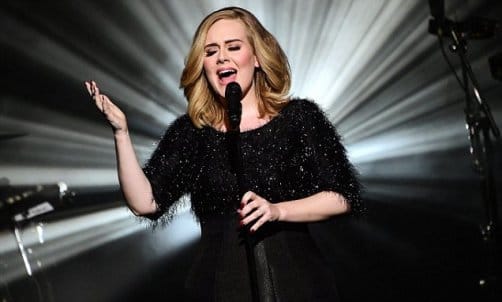
By
Last updated:
December 11, 2022
Sing and Learn! 21 English Songs for Learning Vocabulary and Grammar
Did you know that Beyoncé and Adele are excellent English teachers?
Can you believe that famous old songs by Michael Jackson, The Beatles and Elvis Presley are perfect for learning English grammar?
Today we’ll look at—and listen to!—21 great English songs that can help you learn English.
Contents
- How to Learn English with These Songs
- Songs for Learning English Vocabulary
-
- 1. “Friday I’m in Love” by The Cure
- 2. “We’re Going to Be Friends” by The White Stripes
- 3. “You’re My Best Friend” by Queen
- 4. “I’ve Been Everywhere” by Johnny Cash
- 5. “Just a Girl” by No Doubt
- 6. “Bad Luck” by Social Distortion
- 7. “Black or White” by Michael Jackson
- 8. “Don’t Mug Yourself” by The Streets
- Songs for Learning English Grammar
-
- 9. “Dust in the Wind” by Kansas
- 10. “Since You’ve Been Gone” by The Outfield
- 11. “And She Was” by Talking Heads
- 12. “Summer of ’69” by Bryan Adams
- 13. “Ready to Run” by The Dixie Chicks
- 14. “We Can Work It Out” by The Beatles
- 15. “Always On My Mind” by Elvis Presley
- 16. “Thinking Out Loud” by Ed Sheeran
- 17. “If I Were A Boy” by Beyoncé
- 18. “If It Hadn’t Been For Love” by Adele
- 19. “Hope You Never” by Tom Petty
- 20. “Stressed Out” by Twenty-One Pilots
- 21. “Simple Man” by Lynyrd Skynyrd
Download:
This blog post is available as a convenient and portable PDF that you
can take anywhere.
Click here to get a copy. (Download)
How to Learn English with These Songs
There are two main ways you can use this article and the songs here to improve your English.
If you want to learn actively, you can listen to the songs while following along with the lyrics. Each song in this article includes a link to the video and the lyrics for that song. If you’re in the vocabulary section of this article, you can make a list of any new words you find, focusing especially on the target topic for that song. And if you’re in the grammar section of this article, you can notice when the songs use the mentioned structures and then follow the included links to do more exercises to practice the structures.
Some programs make this simpler. FluentU, for example, has interactive, dual-language subtitles that allow you to click on unfamiliar words for instant definitions. The program’s library of English-language clips has a specific section for music videos.
You can also simply listen to the songs without taking any notes. You won’t exactly “absorb” the English vocabulary and grammar structures automatically, but you may be surprised how much you can learn just by passively listening to songs. And if you hear something that catches your interest, you can always return to the song later on to find more information about the words or structures.
But no matter how you use these songs, you’ll likely find that learning English with music is a fun way to improve your English skills.
I’ve tried to choose songs from many different genres and years, so I hope there’s something that you like.
Let’s start with some songs that can help you increase your English vocabulary.
Songs for Learning English Vocabulary
Obviously any song that has words can help you increase your vocabulary in some way. Here I’ve chosen a few songs that are useful because they include specific types of vocabulary. For each topic, I’ll include the song as well as some comments about the vocabulary.
1. “Friday I’m in Love” by The Cure
Topic: Days of the Week
Video | Lyrics
One of the first things that most people learn in a new language are days of the week. If you can’t talk about the days of the week, it’s almost impossible to make plans or to talk about your routines.
Whether you think the days of the week are easy or hard to learn, you can still enjoy this classic ’80s song by The Cure. Some of the lyrics are a bit confusing (at least for me), but at least the days of the week are in the correct order so you won’t get them confused!
Generally the days of the week aren’t especially difficult to learn, but some of my students do have difficulties pronouncing “Wednesday” and “Thursday,” and they often confuse Tuesday and Thursday because they look similar.
2. “We’re Going to Be Friends” by The White Stripes
Topic: School and Childhood
Video | Lyrics
This song is a reminder of what it’s like to be young and innocent.
It has a really simple sound and the lyrics talk about things that children do at school. For example, it talks about learning how to spell, and it also mentions things like books, pens and uniforms.
The video for the original version of this song (shown above) is okay, but it just shows a guy (Jack White) playing guitar while a girl (Meg White) rests on a sofa.
If you want a video that’s a bit more visual, check out the Jack Johnson version of the song with a fan-made video that has a lot of pictures of the vocabulary in the song.
3. “You’re My Best Friend” by Queen
Topic: Friendship
Video | Lyrics
There are probably millions of love songs, but there seem to be fewer songs about friendship.
Well, even though this song has “best friend” in the title, it’s more about a romantic friendship.
In the lyrics, Queen’s singer Freddie Mercury sings about how sometimes things get difficult, but his friend is always there to help him when he needs it. It’s about faithfulness (being consistent and staying together with someone). Freddie sings that his friend has “stood by” him “in rain or shine,” which is another way of saying that they supported and helped him during bad times (rain) and good times (shine, sunshine).
So, this song is a nice reminder about what friends should do for each other.
4. “I’ve Been Everywhere” by Johnny Cash
Topic: Places and Geography
Video | Lyrics
Johnny Cash was a singer known for singing country songs about criminals and people who had difficult lives. Johnny didn’t actually write this song, but his version is the most famous one.
In it, he tells a story from the perspective of a hitchhiker (a person who tries to get a ride on the side of the road). A truck picks up the hitchhiker, and the hitchhiker then tells the driver about all the different places he’s been.
The lyrics are really fast, but that’s part of the fun. He lists around 100 cities, states and countries, and you can see how many you can understand. The vocabulary for different places is interesting, but it’s also good because you can notice how he rhymes different place names (for example, “Oklahoma” rhymes with “La Paloma” and “Colorado” rhymes with “Eldorado”).
5. “Just a Girl” by No Doubt
Topic: Gender Relations
Video | Lyrics
First of all, the word “gender” basically refers to being “male” or “female” and the typical characteristics of each .
There are many different songs about how society treats men and women differently.
Pink’s song “Stupid Girls” is a good related song, and Lady Antebellum even has another completely different song that’s also called “Just a Girl.” And Beyonce’s song “If I Were a Boy” is excellent, but we’ll be talking about it later in this article. But personally, this No Doubt song is my favorite one to use in classes when we talk about gender issues.
In this song, Gwen Stefani (the singer) sings about how she’s frustrated because society thinks that women are weak and that people treat women like they’re helpless. She uses good vocabulary to express that frustration, saying that people stare (look at her continually) at her like she’s in captivity.
Another good phrase to notice is “I’ve had it up to here.” That means that you’re completely tired and frustrated, and you’re not going to accept a situation anymore.
6. “Bad Luck” by Social Distortion
Topic: Superstitions
Video | Lyrics
I’m always surprised at the conversations we have in class when we talk about superstitions. It’s an interesting cultural topic, and there’s a lot of good vocabulary related to superstitions.
Of course, there are also other songs about superstitions, including “Superstition” by Stevie Wonder and “Superstitious” by Europe. The Stevie Wonder song’s lyrics do talk about some things related to superstitions, but the Europe song is more about how the singer is not superstitious.
The lyrics for this song focus a bit more on luck than on superstition, but there’s still a lot of good vocabulary. The singer talks about how he always loses in poker, pool and life in general, and he mentions superstitions like black cats, broken mirrors and how he always “sings the blues” (which means that he’s always sad).
7. “Black or White” by Michael Jackson
Topic: Tolerance
Video | Lyrics
I’ll admit it: I’ve always liked this song—the Michael Jackson album “Dangerous” was the first cassette I bought with my own money!—but I never really understood the lyrics until recently when a student played the song in class.
The message is clear. It doesn’t matter if you’re black or white or any other color. We’re all equal. The lyrics are a bit difficult to understand (even for a native speaker like me) but the message is maybe a bit more obvious when you watch the video. There are many helpful images that will improve your understanding in the video.
If you can tolerate the first two minutes of the video, then the song starts and it shows Michael Jackson dancing and singing throughout the world with all kinds of different people. At the end of the video, it shows people morphing (transforming) into people with different skin colors and genders.
It’s a nice message about how, even though there are many physical differences in people throughout the world, we’re still all equal.
8. “Don’t Mug Yourself” by The Streets
Topic: British English Slang and Pronunciation
Video | Lyrics
The song “Don’t Mug Yourself,” and basically anything else by the rapper called The Streets, is really British, at least to my American ears. But that means it’s a good example if you want to hear and see more about the differences between British English and American English.
In the song, the singer talks about how he’s going to call a girl he likes, but his friend is warning him that he shouldn’t mug himself (do something to make himself look foolish or stupid).
It’s interesting to hear the pronunciation, and there’s a lot of good slang and vocabulary in the lyrics, but just be aware that there are some bad words.
Two (clean) words that are common in British English, but not American English, are the words “fancy” for “like” (when you like a person romantically) and “oi” (an expression to interrupt or get someone’s attention).
Songs for Learning English Grammar
Just like in the vocabulary section above, any song that has words will also include grammar.
But what if you want some more examples of specific structures that you’re learning in class? If that’s what you need, you’ve come to the right place!
For each song, I’ll include the name of the grammatical structure, some links to explanations of the structure, and a few examples of how the song uses that structure.
9. “Dust in the Wind” by Kansas
Structure: Present Simple Tense
Video | Lyrics
You probably already know the present simple tense (also called “simple present”). It’s one of the first structures most people learn in English, and we use it to talk about things that happen commonly or frequently in the present or to talk about characteristics of people or things. If you want to review it, English Page and the British Council’s Learn English site both have good explanations and examples.
This song is about how we can’t control life or death, and eventually, everything turns into dust. Almost all of the lyrics are in present simple, but some clear examples are lines like:
- All my dreams pass before my eyes
- Don’t hang on, nothing lasts forever
10. “Since You’ve Been Gone” by The Outfield
Structure: Present Perfect Tense
Video | Lyrics
This song is about a guy who misses someone who left, and he sings about what he has been doing since that person left.
This song is also great for learning an English tense called “present perfect.”
We use the present perfect tense to talk about things that started in the past and are still happening now. It’s common to contract the subject (like “I,” “you” or “we”) and the verb “have” (for example, saying “I’ve” instead of “I have”) and that happens a lot in this song’s lyrics.
Some examples of the present perfect in this song include:
- Since you’ve been gone
- I’ve just been fooling around
- You’re not the only girl I’ve ever had
There are some good reviews of this grammar structure on English Page and the British Council page. There are also some other great songs that use this structure, such as U2’s “I Still Haven’t Found What I’m Looking For.”
11. “And She Was” by Talking Heads
Structure: Continuous/Progressive Tenses
Video | Lyrics
There are actually a couple different continuous (also called “progressive”) tenses in English. There are continuous tenses for the past, present and future, and there’s also the perfect continuous for the past, present and future.
That gets complicated, so I chose a song that mainly uses the present continuous (with a form of the verb “to be” in the present and a verb ending in -ing) and the past continuous (with a form of the verb “to be” in the past and a verb ending in -ing).
If you want to review the present continuous, check English Page and the British Council, and they also have explanations for past continuous here and here.
Some examples of the present continuous in the song are:
- She’s making sure she is not dreaming (two examples)
- Now she’s starting to rise
And some examples of the past continuous are:
- She was lying in the grass
- The world was moving
- She was drifting through the backyard
12. “Summer of ’69” by Bryan Adams
Structure: Past Simple Tense
Video | Lyrics
We use the past simple tense to describe things that started and finished in the past. In other words, these are completed actions. Here’s more information on English Page and the British Council’s page. The past simple is one of the first things that intermediate students learn because it’s so common.
The main difficulty that many students have is remembering the past forms of the irregular verbs in English. If you’re not sure what those are, regular verbs end with an “-ed” in the past forms, but irregular verbs have many different forms in the past.
There are charts of most of the irregular verbs in English, but you just have to just practice them and memorize them over time. Fortunately, there are also some tricks to help you learn irregular verbs.
In this song, Bryan is remembering the past and what he and his friends did when he was younger. Some of the song is in the present but a lot of it takes place in the past.
Some examples of the simple past that have regular verbs are:
- That summer seemed to last forever
- We needed to unwind
And some examples of the simple past that have irregular verbs are:
- I got my first real six-string, [I] bought it at the five and dime
- We were young and restless
- When you held my hand, I knew it was now or never
13. “Ready to Run” by The Dixie Chicks
Structure: Future Tenses
Video | Lyrics
There are several ways to talk about the future in English. We don’t have time to go into a lot of detail about all of them here, but the most common ways are:
- The future simple (“will”)
- The future continuous (“will” and an -ing verb)
- The “going to” structure (a form of “to be” plus “going to” plus a verb)
- The present continuous (which we’ve already talked about), if we include a future time word
I chose “Ready to Run” by the Dixie Chicks because it uses a few of these forms, but I’d also recommend “The Land of Hopes and Dreams” by Bruce Springsteen.
Some examples of the future in “Ready to Run” are:
- I’m gonna be ready (the “going to” form, which is informally pronounced “gonna” sometimes)
- I’ll buy a ticket to anywhere (future simple)
14. “We Can Work It Out” by The Beatles
Structure: Modal Verbs
Video | Lyrics
Modal verbs (also called “modal auxiliaries” or simply “modals”) can be tricky, mainly because they can mean different things.
Briefly, a modal verb is a word that you put before a verb to indicate things like possibility, obligation, permission, etc. Common modal verbs are can, will, must, may, should, need to, have to and might, but there are others. The British Council has a good explanation and if you want some exercises you should head over to English Page.
Because they’re so essential, almost every song has at least one modal verb. One I like to use in classes is “We Can Work It Out” by The Beatles. Some examples of modals in that song include:
- Do I have to keep on talking till I can’t go on?
- Our love may soon be gone
- We can work it out
- Only time will tell if I am right
15. “Always On My Mind” by Elvis Presley
Structure: Perfect Modals
Video | Lyrics
Now we’re starting to get into the more complicated English grammar structures.
Perfect modals (also called “past modals”) use a modal (like in the previous section) but we use them to talk about the past. Basically, you’ll need to use this structure:
- a modal + “have” + past participle
There are more explanations at Learn American English Online and Espresso English.
Since many songs talk about the past, a lot of songs have perfect modals. One of my favorites is “Always On My Mind,” which was made famous by Elvis Presley. Some examples of perfect modals in the song are:
- Maybe I didn’t treat you quite as good as I should have
- Little things I should have said and done, I just never took the time
16. “Thinking Out Loud” by Ed Sheeran
Structure: Conditionals
Video | Lyrics
We use conditionals to talk about possible actions and the results of those actions. We usually divide them into four types:
- Zero Conditional
- First Conditional (also called “present/future real”)
- Second Conditional (also called “present unreal”)
- Third Conditional (also called “past unreal”)
Conditional sentences usually have two parts: a condition and a result.
These can get complex, so this section will be basic so it doesn’t get confusing. You can always read more about conditionals and do exercises at English Page.
We use the first conditional to talk about real possibilities, usually in the future. Normally, the condition is in the present tense and the result is in the future.
When talking about this in class, I like to use the song “Time After Time” by Cyndi Lauper but my students especially like “Thinking Out Loud” by Ed Sheeran. In this song, Ed sings to a person he loves, wondering how things will be in the future. Some examples of the first conditional in the song are:
- When my hands don’t play the strings the same way, I know you will still love me the same
- When your legs don’t work like they used to before […], will your eyes still smile from your cheeks?
17. “If I Were A Boy” by Beyoncé
Structure: Second Conditional
Video | Lyrics
We use the second conditional to express unreal (imaginary) possibilities and results about the present. It a bit confusing because the condition is in the simple past and the result uses “would” plus a verb.
For example, you could say “If I were tall, I would be uncomfortable in my small car.” In this example, the reality is that I have a small car and I’m not tall; I’m just imagining a different reality.
A really great song for this “If I Were A Boy” by Beyoncé. She imagines what she would do if she were a boy and how society would treat her differently. Basically, the entire song is a big second conditional sentence, but some examples are:
- If I were a boy, I think I could understand how it feels to love a girl
- If I were a boy, I would turn off my phone
18. “If It Hadn’t Been For Love” by Adele
Structure: Third Conditional
Video | Lyrics
The third conditional is used to talk about actions in the past—but it’s unreal, meaning that we’re imagining different conditions and results that didn’t actually happen. This structure is pretty advanced, and it’s one of the trickiest things for my students to learn.
Adele’s song “If It Hadn’t Been For Love” (the original version by the Steeldrivers is also great) uses this structure to talk about a woman who killed her lover. She’s singing from jail, talking about how and why she killed him. Almost the whole song is in third conditional, but you can see examples in these verses:
- [I] never woulda hitchhiked to Birmingham if it hadn’t been for love (“woulda” is an informal way to say “would have”)
- [I] woulda been gone like a wayward wind if it hadn’t been for love
19. “Hope You Never” by Tom Petty
Structure: Hope Phrases
Video | Lyrics
There are many different ways to talk about hopes, wishes, dreams and desires in English. I put this section after the conditionals section because normally we talk about hopes using the first conditional and we talk about wishes by using the second conditional.
I know, it’s strange because the words basically mean the same thing, but grammar is just weird sometimes.
One common way to talk about hopes is to use two names or subjects. In that structure, the first person is doing the hope and the second person is the topic of that hope. For example, I can say “I hope I pass my exam.” I can also say “I hope she passes her exam.” Notice that in both of these, the verbs are in the simple present.
A good song that uses hope phrases is “Hope You Never” by Tom Petty. It’s a sad breakup song but it has some good hope phrases like:
- I hope you treasure your independence
- I hope you never fall in love with somebody like you
20. “Stressed Out” by Twenty-One Pilots
Structure: Wish Phrases
Video | Lyrics
There are also different ways to talk about wishes, but a common way is very similar to the hope phrases in the last section.
We can have two people, and the first one makes the wish and the second one is the topic of the wish. The biggest difference is that wishes are unreal (or impossible), so you need to change the second verb to the past tense to indicate it’s unreal.
That may sound a bit confusing, but you can see many examples in the song “Stressed Out” by Twenty-One Pilots:
- I wish I had a better voice that sang some better words
- I wish I didn’t have to rhyme every time I sang
- [I] wish we could turn back time to the good ol’ days
21. “Simple Man” by Lynyrd Skynyrd
Structure: Reported Speech
Video | Lyrics
I said earlier that third conditional was one of the hardest things for my students, but reported speech may be even more difficult. Reported speech (also called “indirect speech”) can be confusing, but you can find a complete explanation of how it works at English Page, which also has exercises.
The thing to remember with reported speech is that you’re repeating what someone else said. In other words, you’re reporting that person’s speech. To indicate that we’re using reported speech, the most common thing to do is to move the verbs into the past.
Again, it can get a lot more complex than that, but the song “Simple Man” by Lynyrd Skynyrd is one that I use with my students to practice reported speech. In the song, a man describes a conversation he had with his mother. For example:
- Mama told me when I was young, “Come sit by me, my only son, and listen closely to what I say, and if you do this, it’ll help you some sunny day.”
This is direct speech, but if we change this line from to reported speech, it looks something like:
- His mother told him when he was young to go sit beside her. She told him to listen closely to what she said and that if he did that, it would help him some sunny day.
Even though the song is in direct speech, it’s a good activity to practice making reported speech sentences.
Now that you have all these song ideas, all that you need to do is to turn up the volume and start learning.
Have fun!
Download:
This blog post is available as a convenient and portable PDF that you
can take anywhere.
Click here to get a copy. (Download)


